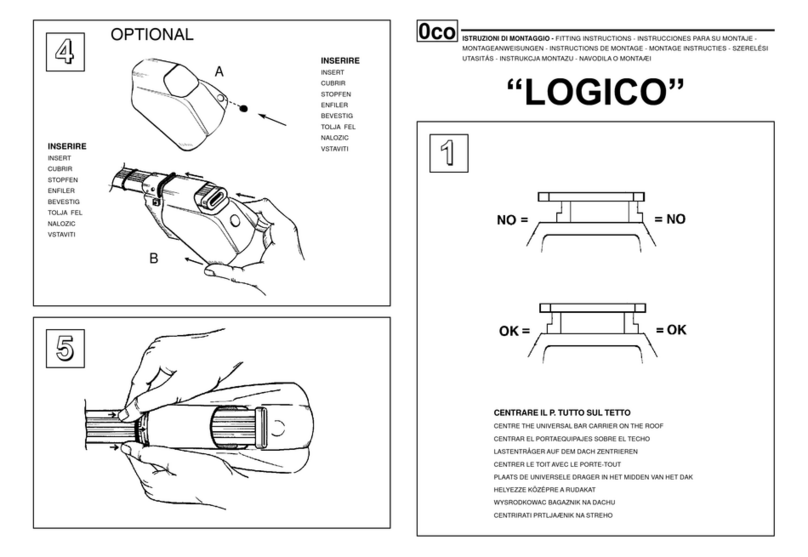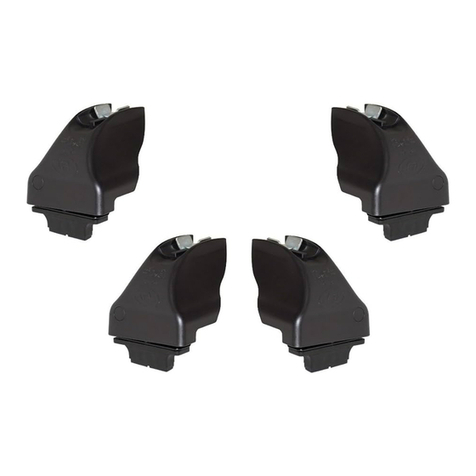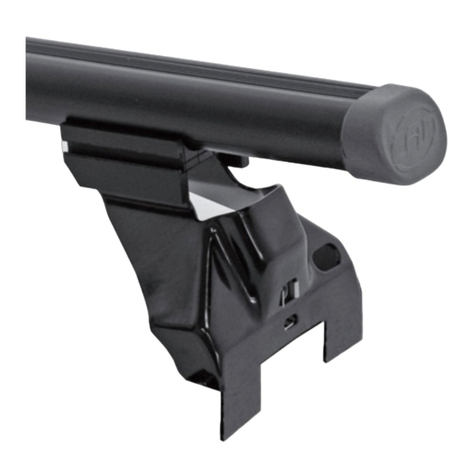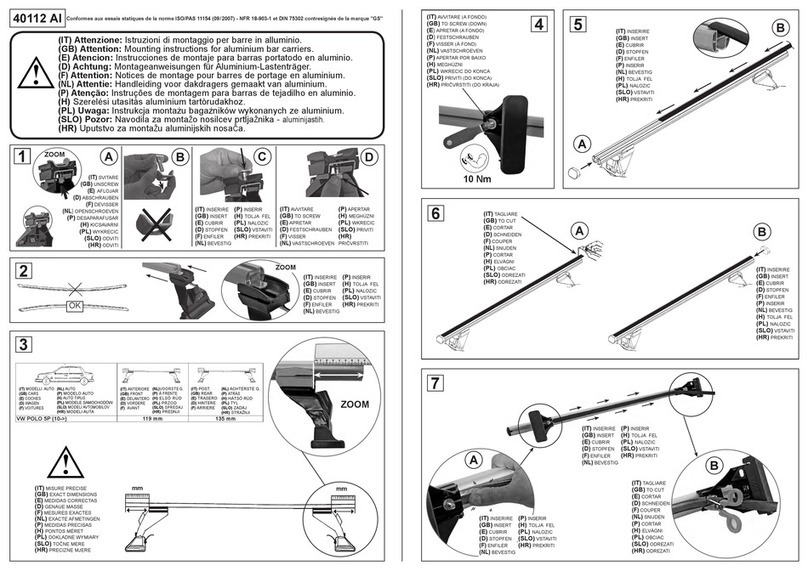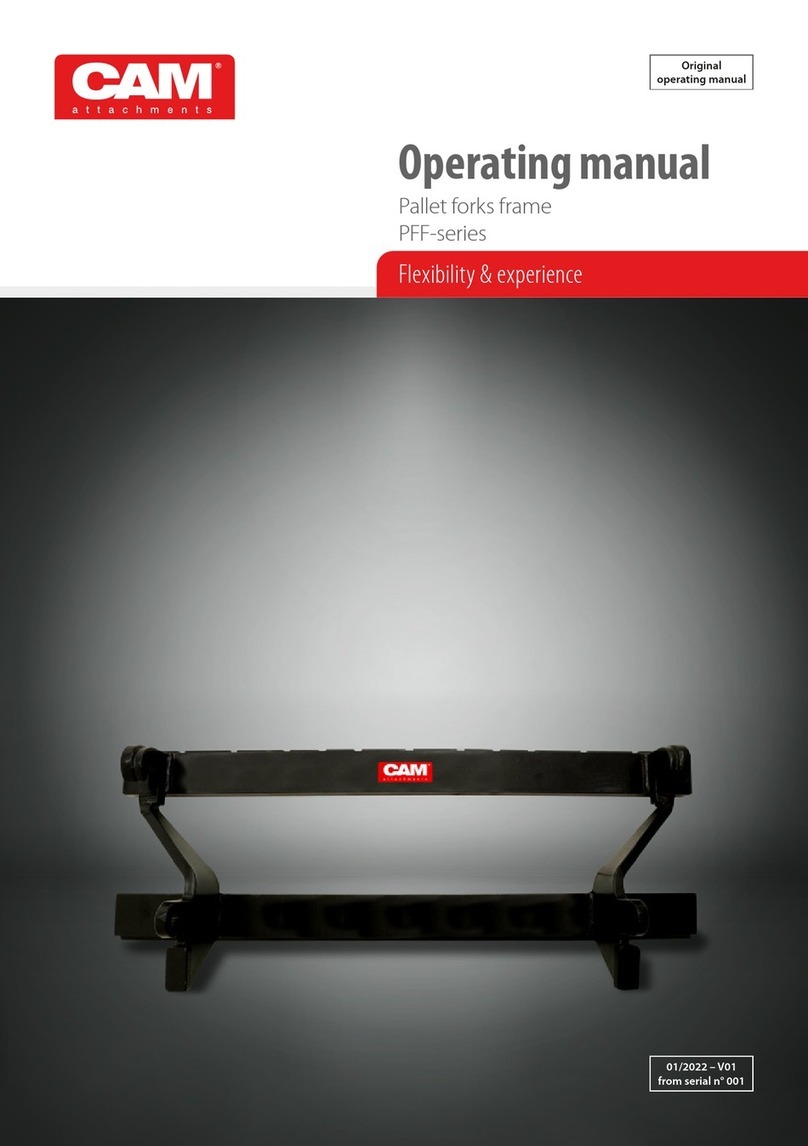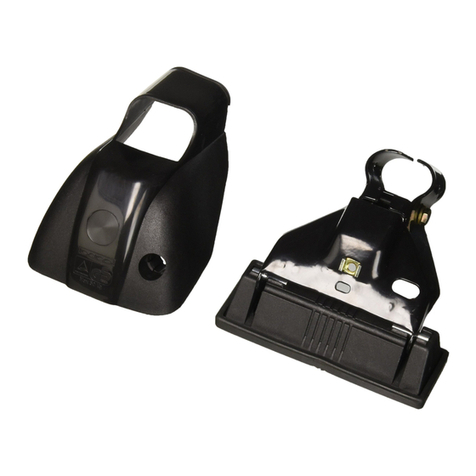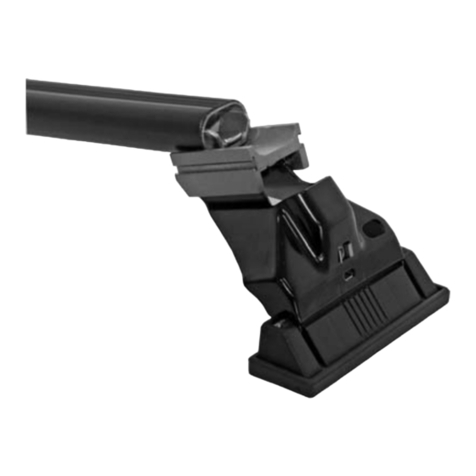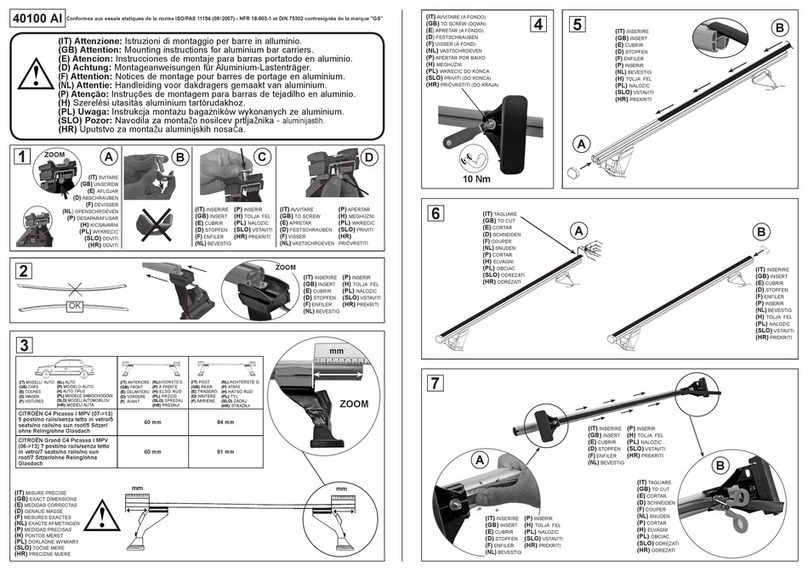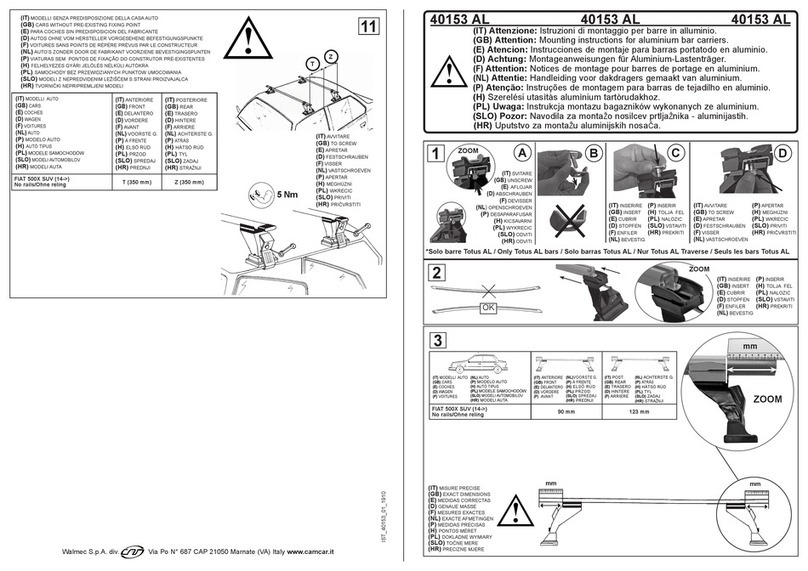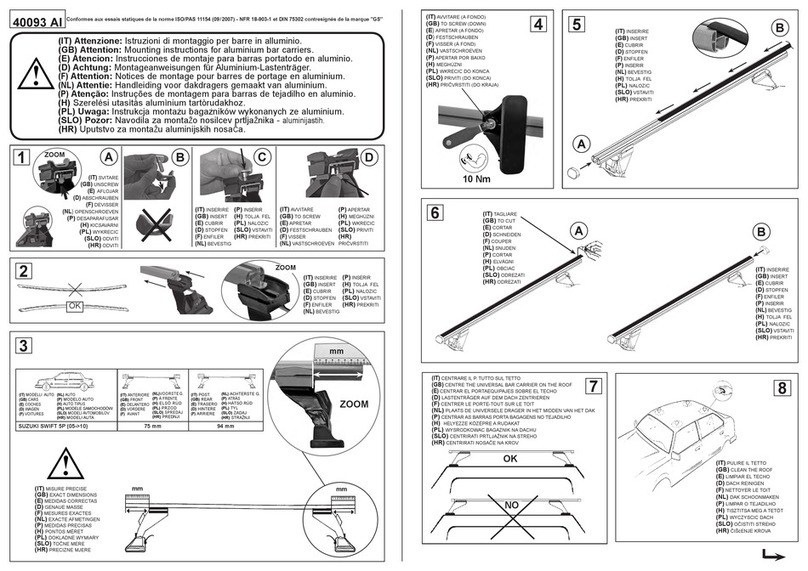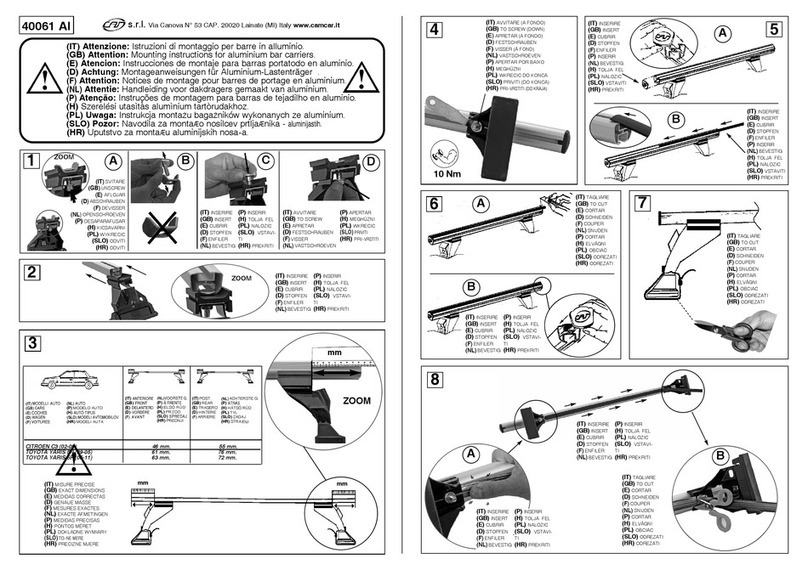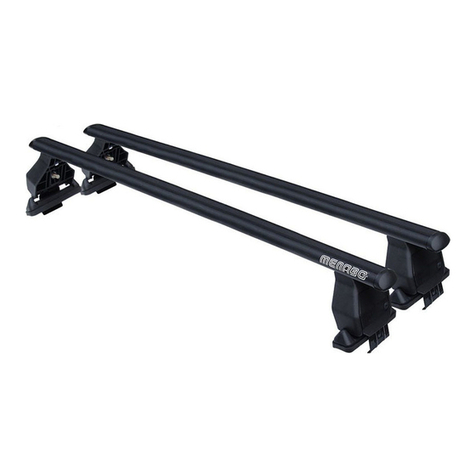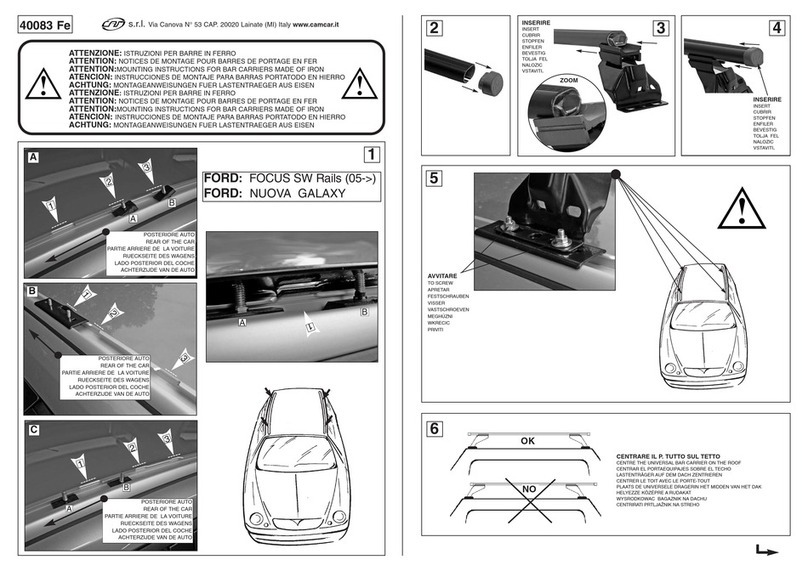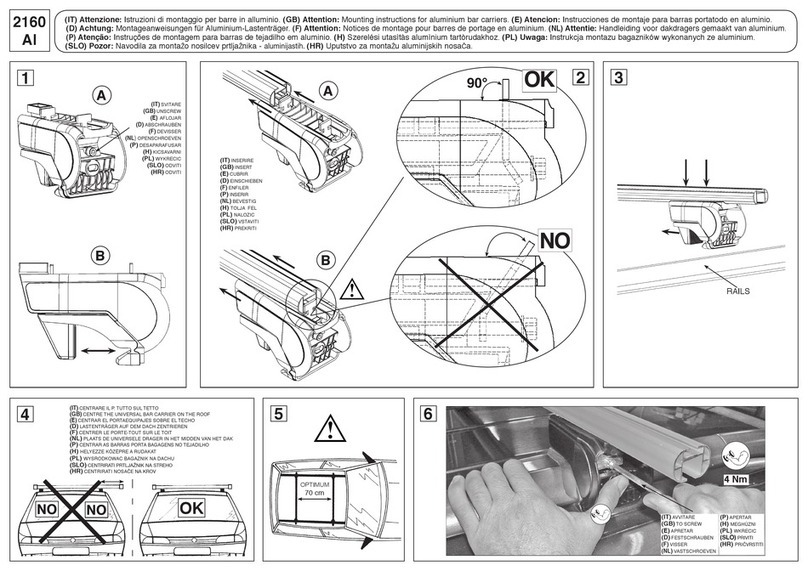
6/28
1. INTRODUCTION
This manual contains all the necessary information on the installation and operation of the hydraulic
scoop.
Some of the maintenance operations should only be carried out by professional technicians.
If you require this information and the maintenance steps, please contact your dealer.
Also included in this manual are a number of safety instructions to create a safe working environment.
The scoop allows you to convert your forklift truck/telehandler/skid steer loader into a mobile shovel.
Scoops are commonly used in the agriculture and construction industries, to name but a few.
This attachment is suitable for many types of machines, such as telehandlers and skid steer loaders.
With this attachment, you can easily load and tip bulk materials such as sand, gravel, coal, etc., saving
you both time and labour.
Check your machine manual to make sure you opt for the right scoop with the correct loading
capacity.
Do not use this product for any other purposes.
Please read the manual thoroughly and observe the safety procedures before putting the unit into
operation. The operator and all persons who come into contact with the equipment should read it
carefully and regularly and have access to it at all times.
Keep this manual near the equipment and in a safe place for future reference!
Contact your dealer for any further questions or concerns you may have.
We guarantee a long period of trouble free operation if the unit is operated and maintained correctly.
We hope you will enjoy working with your hydraulic scoop.
This hydraulic scoop may be unsafe if adequate maintenance is neglected. Therefore,
adequate maintenance facilities, trained personnel and procedures should be provided.
Maintenance and inspection shall be performed conform with the following practices:
1. A scheduled planned maintenance, lubrication and inspection system should be followed
(see maintenance instructions chapter 7).
2. Only qualified and authorised personnel shall be permitted to maintain, repair, adjust,
and inspect the hydraulic scoop.
3. Modifications and additions which affect capacity and safe operation shall not be
performed by the customer or user without the manufacturer’s prior written approval.
Capacity, operation and maintenance plates or decals shall be changed accordingly.
4. If modifications are made without the written approval of the manufacturer, the warranty
will no longer apply.
Any person in charge of putting the machine into operation, the operation itself or the
maintenance of the machine is urged to carefully read and observe the following instructions.
Make sure that the operators of this product are familiar with the safety instructions and follow
all the procedures. Neglecting these instructions can risk injury or death.






